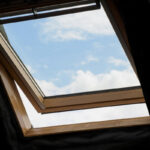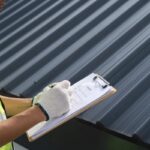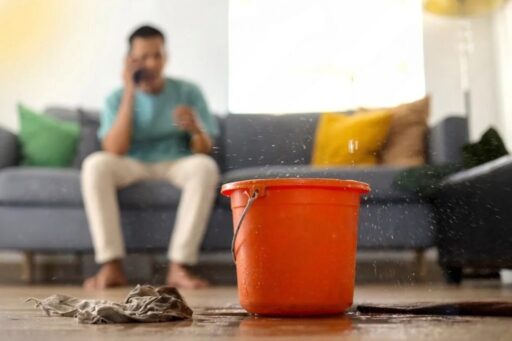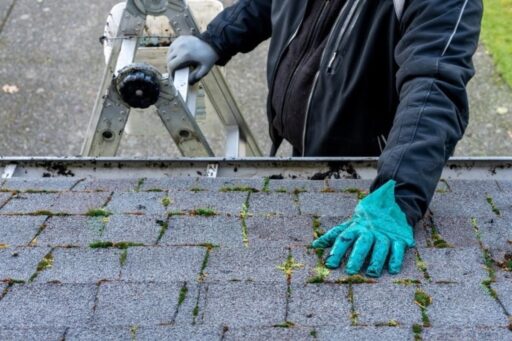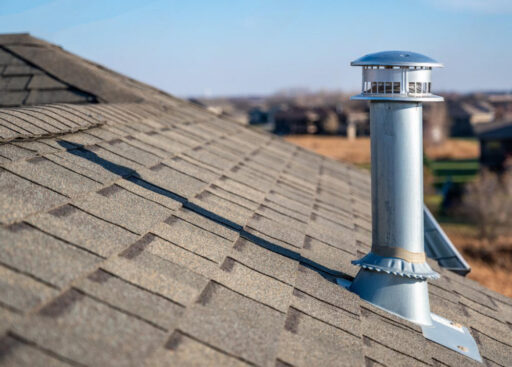Roof caulking is not just about applying a sealant; it requires knowledge of the right materials and techniques. With numerous products available on the market, choosing the correct one for your roof can be daunting. Furthermore, improper application can lead to ineffective sealing, making your efforts pointless. Whether you’re a seasoned DIY enthusiast or a homeowner looking to understand more about roof maintenance, understanding the nuances of roof caulking can save you time and money.
Common Roof Caulking Mistakes
Roof caulking mistakes can lead to significant issues down the road, including leaks, mold growth, and structural damage. Understanding these common errors can help you avoid them and ensure your roof remains watertight. Let’s take a closer look at the five most frequent mistakes made during roof caulking.
- Skipping Surface Preparation: One of the most prevalent mistakes is neglecting to prepare the surface before applying caulk. Without proper preparation, the caulk may not adhere correctly, leading to leaks and other problems.
- Using the Wrong Type of Caulk: With a variety of caulk options available, selecting the wrong type can compromise your roof’s protection. Each type of caulk has specific properties suited for different roofing materials and conditions.
- Poor Application Techniques: Even with the right caulk, improper application can render it ineffective. Application techniques matter significantly in ensuring a lasting seal.
- Neglecting Weather Conditions: Weather plays a crucial role in the success of a caulking job. Ignoring weather conditions can lead to premature failure of the sealant.
- Failing to Inspect and Maintain: Regular inspection and maintenance are crucial for the longevity of your caulking work. Overlooking this aspect can cause minor issues to escalate into major repairs.
Let’s explore each one and learn how to avoid it.
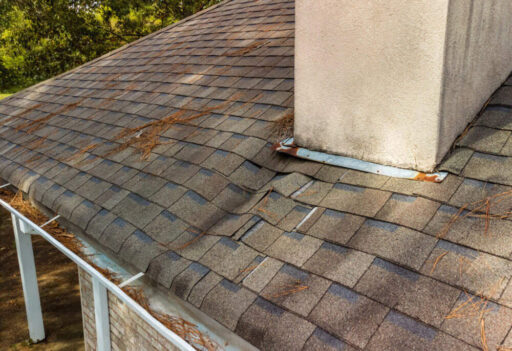
Mistake #1: Skipping Surface Preparation
Surface preparation is a critical step in the roof caulking process that should never be overlooked. Proper preparation ensures that the caulk adheres effectively to the surface, providing a reliable seal. Many homeowners make the mistake of applying caulk directly to dirty or wet surfaces, which can lead to adhesion issues and premature failure.
To prepare the surface correctly, start by cleaning the area where the caulk will be applied. Remove any dirt, debris, or old caulk remnants using a scraper or wire brush. Ensure the surface is dry and free from moisture, as wet surfaces can prevent the caulk from bonding properly. This step might seem time-consuming, but it is essential for achieving a durable and long-lasting seal.
Moreover, identify any signs of damage on the surface, such as cracks or holes, and repair them before applying caulk. This not only enhances the effectiveness of the caulk but also prevents further deterioration of the roof. By investing time in surface preparation, you set a solid foundation for a successful roof caulking project.
Mistake #2: Using the Wrong Type of Caulk
Choosing the correct type of caulk for your roofing material is crucial for effective sealing. Each caulk type has specific properties that make it suitable for certain materials and environmental conditions. Using the wrong caulk can result in poor adhesion, cracking, or other issues that compromise the seal.
There are several types of caulks available, including silicone, acrylic, polyurethane, and butyl rubber. Silicone caulks are highly flexible and resistant to UV rays, making them ideal for areas exposed to direct sunlight. Acrylic caulks are paintable and work well on surfaces that require a painted finish. Polyurethane caulks are known for their strong adhesion and durability, suitable for various roofing materials. Butyl rubber caulks are excellent for areas requiring a waterproof seal, particularly around flashing and gutters.
Before purchasing caulk, understand your roof’s specific needs and the environmental conditions it will face. Consult with a roofing professional if you’re unsure about which caulk to use. By selecting the appropriate caulk, you can ensure a robust and long-lasting seal that protects your home effectively.
Mistake #3: Poor Application Techniques
Even with the right caulk and properly prepared surface, the success of your caulking job depends heavily on your application technique. Improper application can lead to uneven coverage, air bubbles, or gaps, reducing the effectiveness of the seal. Understanding the correct technique is fundamental to a successful roof caulking project.
Begin by cutting the caulk tube’s tip at a 45-degree angle, which allows for a smoother and more controlled application. Use a caulking gun to apply a steady, consistent bead of caulk along the seam or joint. Ensure that the bead is wide enough to cover the area effectively but not so wide that it becomes difficult to manage.
After applying the caulk, smooth it out using a caulk smoothing tool or your finger (wearing a glove) to ensure there are no gaps or air bubbles. This step is crucial for achieving a seamless seal. Additionally, avoid applying too much caulk, as excess material can lead to waste and an unsightly finish. By mastering these application techniques, you can achieve a professional-looking and long-lasting caulking job.
Mistake #4: Neglecting Weather Conditions
Weather conditions play a significant role in the success of your roof caulking project. Many homeowners make the mistake of applying caulk without considering the weather, leading to suboptimal results. Caulking in inappropriate weather conditions can result in reduced adhesion and premature failure of the sealant.
Avoid applying caulk during extreme temperatures, either too hot or too cold, as these conditions can affect the caulk’s curing process. Ideally, caulking should be done when temperatures are moderate, typically between 40°F and 80°F (4°C and 27°C). Additionally, ensure that rain or snow is not in the forecast for at least 24 hours after application to allow the caulk to cure properly.
Humidity levels also impact the curing process. High humidity can slow down curing, while low humidity can cause the caulk to dry too quickly, leading to cracks. By monitoring weather conditions and planning your caulking project accordingly, you can ensure a more effective and durable seal.
Mistake #5: Failing to Inspect and Maintain
Regular inspection and maintenance are essential for ensuring the longevity of your roof caulking. Many homeowners neglect this crucial step, allowing minor issues to develop into significant problems. By incorporating regular inspections into your maintenance routine, you can identify and address potential issues before they escalate.
Inspect your roof at least twice a year, focusing on areas where caulk has been applied. Look for signs of wear, such as cracks, gaps, or discoloration, which may indicate that the caulk needs replacement. Pay particular attention to areas around flashing, vents, and skylights, as these are common spots for water infiltration.
In addition to visual inspections, consider performing a water test by gently spraying water on the roof and checking for leaks inside the home. If you identify any issues, address them promptly by reapplying caulk or seeking professional assistance if needed. By maintaining your roof caulking regularly, you can extend the life of your roof and prevent costly repairs.
How to Choose the Right Caulk for Your Roof
Selecting the right caulk is a critical step in ensuring the effectiveness of your roof caulking efforts. With various options available, it’s important to understand the properties of each type and how they relate to your specific roofing needs. This section will guide you through the process of choosing the right caulk for your roof.
First, consider the material of your roof. Different roofing materials, such as asphalt shingles, metal, or tile, may require specific types of caulk for optimal adhesion and performance. Consult with a roofing professional or refer to the manufacturer’s recommendations to determine the best caulk for your roofing material.
Next, consider the environmental conditions your roof will face. If your roof is exposed to direct sunlight, choose a caulk that is UV resistant, such as silicone or polyurethane. For areas with high moisture or humidity, opt for a caulk that offers excellent waterproofing properties, like butyl rubber.
Finally, think about the aesthetic requirements of your roof. If you need to paint over the caulk, select a paintable option like acrylic. By taking into account these factors, you can choose the right caulk that meets your roof’s specific needs and ensures a long-lasting, effective seal.
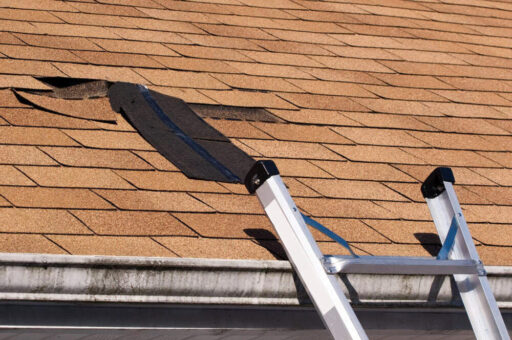
Tips for Proper Roof Caulking
Mastering the art of roof caulking requires more than just avoiding common mistakes. Here are some additional tips to help you achieve a professional and effective caulking job that enhances the longevity and performance of your roof.
- Plan Ahead: Before starting your caulking project, gather all the necessary tools and materials, including the caulk, caulking gun, smoothing tool, and cleaning supplies. Having everything ready will make the process smoother and more efficient.
- Practice Patience: Take your time during the application process to ensure accuracy and precision. Rushing through the job can lead to mistakes and subpar results.
- Use Protective Gear: Wear gloves and safety goggles to protect yourself from potential hazards, and work carefully on ladders or rooftops to avoid accidents.
- Follow Manufacturer Instructions: Each caulk product may have specific application and curing instructions. Adhering to these guidelines will help you achieve the best results.
- Seek Professional Help: If you’re unsure about any aspect of the caulking process, don’t hesitate to consult with a roofing professional. Their expertise can provide valuable insights and ensure a successful outcome.
With these tips, you can enhance the quality of your roof caulking work and protect your home from potential water damage effectively.
Final Thoughts
In conclusion, roof caulking is a vital component of home maintenance that requires careful attention to detail. Investing time and effort into mastering the art of roof caulking will pay off in the long run, saving you from costly repairs and enhancing the overall integrity of your home. Regular inspection and maintenance further contribute to the longevity of your roof caulking efforts. If you’re ready to take control of your roof’s maintenance and protect your home from water damage, contact us today for a free quote and expert roofing support.


